Silica and our health
Silica supports your health in So Many Ways!
See Younger Skin ~ Feel Younger Joints
 Unless
you're still a teenager or in your 20s, I think everyone wants to look
and feel younger. We have something that can actually do both - the mineral
Silica. It's completely under-appreciated and overlooked by many nutritionists.
Unless
you're still a teenager or in your 20s, I think everyone wants to look
and feel younger. We have something that can actually do both - the mineral
Silica. It's completely under-appreciated and overlooked by many nutritionists.
Let's explore why you need Silica, and discover three excellent
natural sources.
Why You Need Silica Supplementation
The short answer is to hold yourself together as you
age!
Silica holds all your connective tissues together and this supports your structure - your bones, joints, cartilage and your muscles.
Silica holds all your connective tissues together and this supports your structure - your bones, joints, cartilage and your muscles.
Silica helps you look and feel younger than you actually are.
Silica ensures that your
- Connective Tissues are healthy (stronger, pain-free joints)
- Bones are Dense and Strong (calcium and other minerals get into bones)
- Flexible, Strong Arteries (lower risk of cardiovascular issues)
- Skin is radiant (no redness with fewer wrinkles)
- Hair is shiny (thicker and strong)
- Nails are tough (less prone to breaking)
- Teeth and Gums (less dental work, and keep your teeth for your lifetime)
All this support from Silica prevents untimely signs of aging.
 Silica
is found in every cell, organ and system of your body. Your body does
not store it, so it must be replenished. At birth, you start with a limited
amount of Silica that continually declines.
Silica
is found in every cell, organ and system of your body. Your body does
not store it, so it must be replenished. At birth, you start with a limited
amount of Silica that continually declines.
Throughout your life so far, the food you've eaten has been
a poor source of Silica because our soils have become deficient in this
essential mineral from modern agricultural practices.
Then as you age further, you become less efficient at absorbing
Silica. You need it to remain flexible, resilient and energetic.
At the time you are fully grown, you will have used up to
80% of your stored silica reserve.
You're losing Silica faster than you can re-supply it!
During the past 24 hours, your body lost around 40mg of
Silica. Daily uptake of Silica varies wildly depending upon the types
of food and water consumed. Many people get only 5mg daily. Even good
diets provide only about 20mg - half of what is lost.
Nearly every person is in a daily downward spiral of less
and less Silica and more and more aging and decline. The accumulated Silica-deficit
and health consequences can be severe. Without sufficient Silica, your
body is handicapped to prevent premature aging or to sustain and restore
optimal function.
Ongoing daily supplementation helps you to regain and sustain
healthy performance.
But more importantly (in my opinion)...
With adequate Silica, your body will perform far better
- with fewer injuries - if your structure is firmly held together.
Silica's beneficial for everyone...
women, men, athletes, convalescents and the elderly too.
 Silica
and Dementia
Silica
and DementiaStudies show that Silica counteracts the effects of aluminum on the body and therefore may be important in preventing dementia.
Extensive research has shown that supplementation with Silica
is a safe and effective way to rebuild your silica store.
However, we humans are not good at transforming the rock-mineral
called silica into a form that can be absorbed by our bodies. Only plants
are able to process silica, transforming it into a form that your body
can absorb and use.
Restated...
Mammals can only absorb the silica when it's been previously mineralized by plants. Only then will it be in a form that your body can use.
We need to eat plants that have already "digested" silica
from the soil. Mammals can only absorb the silica when it's been previously mineralized by plants. Only then will it be in a form that your body can use.
Silica supports your health in So Many Ways!
See Younger Skin ~ Feel Younger Joints
Unless you're still a teenager or in your 20s, I think everyone wants to look and feel younger. We have something that can actually do both - the mineral Silica. It's completely under-appreciated and overlooked by many nutritionists.
Let's explore why you need Silica, and discover three excellent natural sources.
Why You Need Silica Supplementation
The short answer is to hold yourself together as you age!
Silica holds all your connective tissues together and this supports your structure - your bones, joints, cartilage and your muscles.
Silica helps you look and feel younger than you actually are.
Silica ensures that your
Connective Tissues are healthy (stronger, pain-free joints)
Bones are Dense and Strong (calcium and other minerals get into bones)
Flexible, Strong Arteries (lower risk of cardiovascular issues)
Skin is radiant (no redness with fewer wrinkles)
Hair is shiny (thicker and strong)
Nails are tough (less prone to breaking)
Teeth and Gums (less dental work, and keep your teeth for your lifetime)
All this support from Silica prevents untimely signs of aging.
Silica is found in every cell, organ and system of your body. Your body does not store it, so it must be replenished. At birth, you start with a limited amount of Silica that continually declines.
Throughout your life so far, the food you've eaten has been a poor source of Silica because our soils have become deficient in this essential mineral from modern agricultural practices.
Then as you age further, you become less efficient at absorbing Silica. You need it to remain flexible, resilient and energetic.
At the time you are fully grown, you will have used up to 80% of your stored silica reserve.
You're losing Silica faster than you can re-supply it!
During the past 24 hours, your body lost around 40mg of Silica. Daily uptake of Silica varies wildly depending upon the types of food and water consumed. Many people get only 5mg daily. Even good diets provide only about 20mg - half of what is lost.
Nearly every person is in a daily downward spiral of less and less Silica and more and more aging and decline. The accumulated Silica-deficit and health consequences can be severe. Without sufficient Silica, your body is handicapped to prevent premature aging or to sustain and restore optimal function.
Ongoing daily supplementation helps you to regain and sustain healthy performance.
But more importantly (in my opinion)...
With adequate Silica, your body will perform far better - with fewer injuries - if your structure is firmly held together.
Silica's beneficial for everyone...
women, men, athletes, convalescents and the elderly too.
Silica and Dementia
Studies show that Silica counteracts the effects of aluminum on the body and therefore may be important in preventing dementia.
Extensive research has shown that supplementation with Silica is a safe and effective way to rebuild your silica store.
However, we humans are not good at transforming the rock-mineral called silica into a form that can be absorbed by our bodies. Only plants are able to process silica, transforming it into a form that your body can absorb and use.
Restated...
Mammals can only absorb the silica when it's been previously mineralized by plants. Only then will it be in a form that your body can use.
We need to eat plants that have already "digested" silica from the soil.
Nutrition Questions and Answers
Q: How much silica is in the common food sources with the highest amounts of silica?
A: There are a number of foods which are an excellent source of silica (silicon) and they are: Banana (yellow, peeled), 250g - 13.60mg
Beer, 1L - 19.2mg
High bran cereal, 100g - 10.17mg
Bread (wholegrain), 200g - 8.94mg
Raisin (California seedless), 100g - 8.25mg
Mineral water (high silica), 500mL - 7.23mg
Green beans (cooked), 250g - 6.10mg
Carrot (raw, peeled), 200g - 4.58mg
Bread (wholemeal), 200g - 4.50mg
Brown rice, 200g - 4.14mg
Mineral water (regular), 500mL - 3.44mg
Bread (white), 200g - 3.38mg
Wheat biscuits, 100g - 2.78mg
White rice, 200g - 2.48mg
Cornflakes, 100g - 2.42mg
Some studies have shown that men have higher concentrations of silica in their urine and blood due to their higher consumption of beer (compared to women).
What Foods Contain Silicon?
What Are the Benefits of Juicing Bok Choy?
What Are the Benefits of Whole-Wheat Bagels?
The Benefits of Sea Cucumber
Benefits of Juicing Radishes
Foods That Contain Coenzyme Q10
Oyster Mushroom Health Benefits
Silicon is found in foods that are whole and unprocessed. Although there is no official research recommending a daily amount of silicon, it is important that silicon be taken into the body on a daily basis. A daily intake of 25 to 50 mg is suggested. Some foods contain high levels of silicon, while other foods contain lower levels.
What is Silicon?






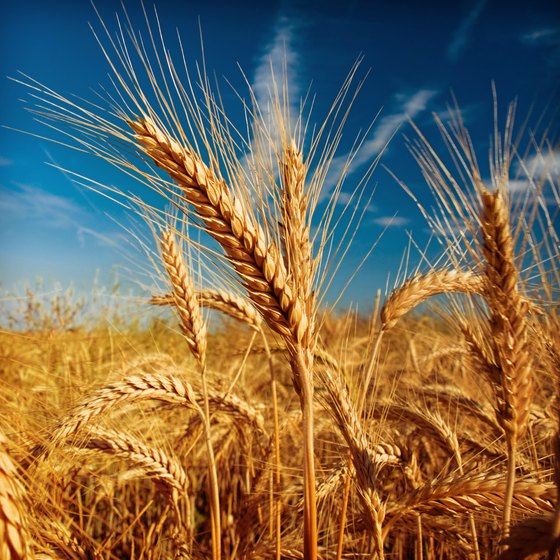
Silica, also called silicon, is a natural mineral present in a number of foods. According to the 2006 book "Staying Healthy With Nutrition," by Elson M. Haas, the advantages of this tiny mineral include improving bone density, skin texture and hair, nail, teeth and gum health. Haas also reports daily silica intake repairs some the effects of aging and has been shown to reduce arterial fat deposits. Older persons hoping to improve the look of their skin and hair benefit greatly from foods and diets rich in silica.
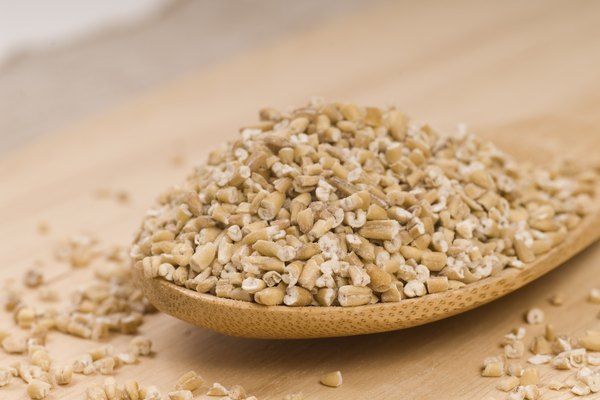
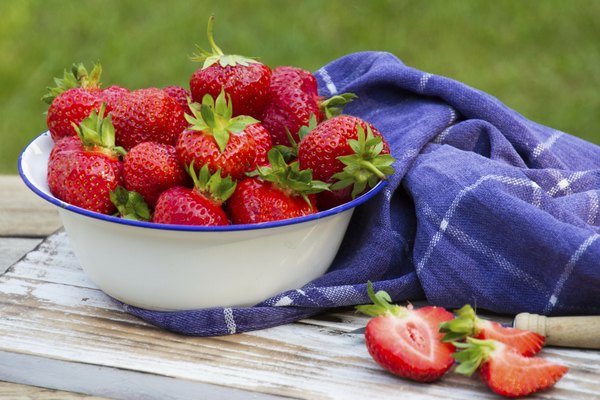
Very high amounts of silicon are also found in whole-grain foods, such as rice and oats, as well as millet and flaxseeds. Since silicon is mainly found in natural sources of food, it only makes sense that these foods in their natural make-up contain an abundant amount of silicon. High amounts of silicon are also found in mother's milk.
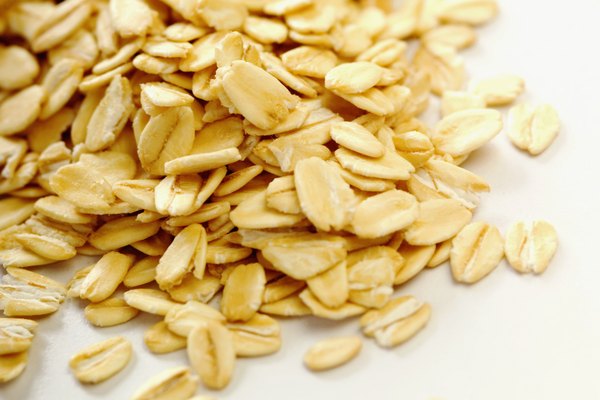
Silicon is a nonmetallic element with the atomic weight of 28. Silicon protects the body against arteriosclerosis and aluminum. Silica refers to natural materials of silicon dioxide, and silicone refers to man-made materials. The highest amounts of silicon are found in plants, mostly grains such as oats, barley and rice; low levels of silicon are found in animal products. Beer is a high source of silica, containing anywhere from 33 to 60 mg. Water also yields silicon, but as orthosilicic acid. Drinking 2 liters of water a day will allow an intake of 10 mg of silicon.
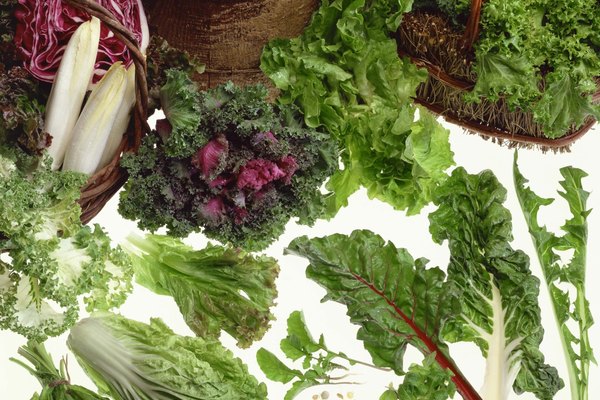
Vegetables Containing Silicon Many vegetables contain silicon since they are plant-based foods. Levels of silicon vary in each vegetable. Some examples of vegetables that contain silicon are asparagus, cabbage, cucumbers, dandelion greens (edible weeds with an intense hearty taste and bitter tinge), lettuce, mustard greens, olives, parsnips, radishes, white onions, corn, sugar beets, bell peppers, horsetail grass (herb), soybeans, alfalfa and stems of leafy vegetables.
Other Food Sources of Silicon
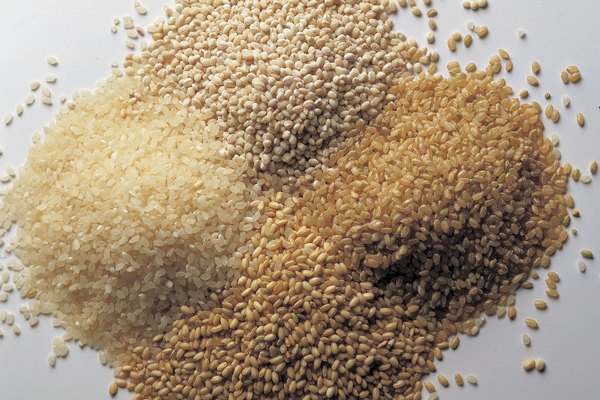
23 Foods high in Silicon
Bell peppers
Soybeans
Oats
Brown rice
Barley
Burdock root
Apples
Oranges
Raisins
Grapes
Cucumber
Hemp leaves
Horsetail
Marjoram
Spinach
Radish
Romaine lettuce
Tomato
Nopal cactus
Peanuts
Almonds
Millet
Flaxseeds

Cabbage, Napa, Barrel Head Hybrid
Short Description
Extra-large cylindrical heads are jam-packed with crispy, white-ribbed, green outer leaves and yellow inner leaves.
Full Description
Almost twice
the size of regular Napa cabbage! An astonishment of color, extra-large
4½ lb. cylindrical heads are jam-packed with crispy, white-ribbed,
pale-green outer leaves and yellow inner leaves; one huge barrel of
subtle, refreshing cabbage flavor. ‘Barrel Head’ is bolt-tolerant and
resistant to downy mildew and club root.

Cauliflower, White Corona Hybrid
Short Description
The fastest—and whitest—cauliflower you’ll ever see.
Full Description
The
fastest—and whitest—cauliflower you’ll ever see. In spring, in just 33
days after transplanting, ‘White Corona’s compact 12–14" plants are busy
producing flavor-packed, sun-bright heads; a luminous cauliflower
crown. A perfect fit for patios and smaller gardens. Prime for staggered
plantings during cooler months.

Tomato, Atlas Hybrid
Short Description
First-ever beefsteaks for porches and decks in warm, sunny conditions everywhere.
Full Description
Pick big,
tasty beefsteaks right outside your door! First-ever beefsteaks for
porches and decks in warm, sunny conditions everywhere. New bushy,
compact ‘Atlas’ plants easily shoulder their bountiful loads of
one-pound tomatoes. This vigorous, neatly growing paragon of the patio
combines modern performance with old-time flavor. Fruits deliver
unsurpassed balance of sweetness and acidity. Semi-determinate plants.

Pea, Sugar Prince
Short Description
Deliciously sweet pods are perfect for freezing and canning.
Full Description
In early- to
mid-summer, ‘Sugar Prince’s 30" high-yielding vines produce a profusion
of long, slender, mid-sized pods that are remarkably tasty.
Highly-productive cross between snow peas and garden peas produces
crunchy, fully edible, curved, stringless pods filled with sweetly
flavorful small seeds. Excellent disease resistance package helps ensure
high productivity. Good choice for canning and freezing.

Radish, Solaris Hybrid
Short Description
Get ready for a year-round bonanza of round, bright-red radish beauties.
Full Description
Get ready for a
year-round bonanza of small, round, bright-red radish beauties. Robust,
dependable, fast-growing hybrid plants produce oodles of tangy radish
marvels in no time flat (25 days). A radically enjoyable radish.
Pepper, Sweet, Jungle Parrot
Short Description
Sweet and delicious adorable little pepper whose small size and high yield make it perfect for the patio.
Full Description
Adorable,
beak-like pepper whose small size and high yield make it perfect for
large patio tubs. Sweet and delicious fresh from the vine or as stuffed
appetizers. Attractive, 2' by 2½', inverted-pyramid plants make ‘Jungle
Parrot’ the perfect picking patio pepper. Kids will love them.

Beet, Detroit Dark Red Medium Top
Short Description
Unbeatable beets: dark red, extremely sweet flesh.
Full Description
These
perfectly round 3" beets have striking deep red flesh that's incredibly
sweet. Baby beets make excellent eating, and harvesting them helps
promote the growth of the remaining beets. When planting, mix beet seeds
with fast-sprouting radish seeds to mark the rows.

Pepper, Hot Jalapeno, Ring Leader Hybrid
Short Description
New prolific leader for pickled rings in Southwest recipes, salads, and tacos.
Full Description
Early
ripening, this prolific new pepper runs rings around other jalapeños!
Let ‘Ring Leader’ be your summer-long source for tasty jalapeño rings in
Southwest recipes and salads, and on burgers and tacos. Fantastic
stuffed or pickled too. Disease-resistant plants yield early and heavy
harvests of 4" peppers from early to late season.

Carrot, Yaya Hybrid
Short Description
Sets a new standard for flavor. Extremely sweet and juicy.
Full Description
Cook's Garden
Favorite. Hybrid. From the Dutch breeders that developed 'Napoli', the
famous 'sugar carrot', comes this latest treat that sets a new standard
for flavor. The 6 inch roots are bright orange with a blunt tip,
retaining their extremely sweet and juicy, crisp-tender traits even if
left in the garden plot for later harvests. An excellent choice for
sweet desserts like Maple Carrot Cake.

Cucumber, Mexican Sour Gherkin
Short Description
Tiny, sweet treats have sweet cucumber flavor combined with a tangy sourness.
Full Description
Cook's Garden
Favorite. Get ready for an extravaganza of tiny, sweet treats. Mini
fruit’s sweet cucumber flavor is combined with a tangy sourness: as if
pickled already. Yields a bounty of tiny cukes for salads, snacks and
pickling. Gorgeous when cascading from a hanging basket or growing on a
trellis.

Spinach, Indian Summer Hybrid
Short Description
Great Three Season Variety Easy to grow and super productive.
Full Description
Cook's Garden
Favorite. Hybrid. Our main crop variety here in the garden. Upright,
dark green and very slow to bolt during hot weather. Leaves are
attractively savoyed and taste great! High yielding and disease tolerant
for spring, summer and fall crops.

Eggplant, Patio Baby Hybrid
Short Description
Early-yielding All-America Selection, perfect for patios.
Full Description
‘Patio Baby’, a
prodigiously prolific dwarf eggplant, offers up a summerlong harvest,
each plant producing 25 to 50 luscious babies. Aboard the patio,
early-yielding All-America Selection makes a striking impression,
compact 16-20" plants clustered with egg-shaped, 2-3" purple-black
fruit. Loaded with rich, mild, sweet flavor, ‘Patio Baby’s mini-fruits
(never eaten raw) are delicious baked, roasted, or sautéed—excelling as a
side dish, or starring in salads or dips. Thornless leaves and calyxes
make for painless harvesting. Small pale-lavender blooms appear in
spring. Thriving in any climate, ‘Patio Baby’ is a great choice for
shorter growing seasons of the Northeast and Midwest. No staking
required.

Beet, Cook's Custom Blend
Short Description
You don't need a big garden to enjoy beets! Plant once and enjoy a long harvest!
Full Description
Cook's Garden
Favorite. We make up this mix for those of you with small gardens, or
who simply haven't yet discovered what a wonderful vegetable homegrown
beets can be. Includes all the beets currently in stock (except Bull's
Blood) to yield a variety of beets that mature over a long period of
time. Mixed packet of seed.

Bean, Mascotte
Short Description
Super productive and flavorful French variety.
Full Description
Cook's Garden
Favorite. French green bean par excellence. ‘Mascotte’ offers up a
plentitude of round, extra fine, stringless 5” beans, the crisp flesh
packed with flavor. Pods require only the simplest preparation: a little
steaming, a little butter: bean bliss. Exceptionally productive, easily
harvested, 20” dwarf plants are well-suited for windowboxes, pots,
patios and the garden. GROWING TIP: Allow two to four days between each
gathering. 50-55 days.

Radish, D'Avignon
Short Description
Fast Growing Salad Radish
Full Description
Cook's Garden
Favorite. Our choice for the best non-hybrid French Breakfast type
radish, perfect for early Spring salads. Nearly cylindrical 3-4 inch
roots are bright red with white tips. Ready in only three weeks from
seeding!

Squash, Summer, Elite Hybrid
Short Description
Early French type with high yields
Full Description
Cook's Garden
Favorite. Hybrid. A super early French hybrid zucchini that is both high
yielding and easy to pick. Medium green, lightly flecked cylindrical
fruits taste great, too.

Bean, Bush, Porch Pick
Short Description
Delicious container bean delivers heavy-duty yields.
Full Description
Tender is the
bean. Meet ‘Porch Pick’, our delicious container bean of choice for
piquant patio picking. Compact, small-leaved plants deliver heavy-duty
yields of tender, flavorful, crisp green pods loaded with summer-fresh
flavor. When harvested, ‘Porch Pick’ pops right off the vine during
harvest, so cleaning beans is a snap.

Radish, Rido Red Hybrid
Short Description
Knockout watermelon-red radish.
Full Description
Beautiful
creamy-white, fuchsia-hearted “watermelon radish” with enticing
sweet-savory flavor. Hybrid heir to a prized Chinese heirloom, ‘Rido
Red’s knockout watermelon-red hearts keep their scrumptious color,
whatever the growing season. Crisp, tasty flesh of large 2-4"-round
roots adds sweet, piquant, flavor perfect for salads and garnishes. For a
deep, aromatic, profoundly delicious gourmet surprise, cut them into
wedges, add oil, bake till fork-tender (about an hour), and sprinkle
with salt. Amazing.

Swiss Chard, Burpee's Rhubarb
Short Description
Crimson stalks with glossy green, crinkled leaves.
Full Description
Another
excellent and nutritious Burpee-bred chard with crimson stalks with
glossy green, crinkled leaves. Easy to grow; eat it like spinach or beet
greens. Pick from late spring till winter. Proven tops for performance,
flavor and wide adaptability. 100 seeds sows 20' of row. Grows best in
full sun, tolerates partial shade.

Potato, Red Cloud
Short Description
Great tasting baking potato with fabulous red skin.
Full Description
Cook's Garden
Favorite. This beauty has the most intense red skin of any red potato.
Its dry texture makes a delicious baker. Vines yield very well and roots
keep a long time when stored in a cool dry place. Great taste.

Leek, Lancelot
Short Description
Adaptable variety grows well nationwide.
Full Description
Cook's Garden
Favorite. The long, white shafts have a dark blue/green upright flag.
The 12-14 inch shaft provides a distinct flavor to your soups and
salads. Leeks are not daylight sensitive so their tops do not fall over.
Give them plenty of water and plenty of time and you'll find yourself
repaid handsomely.75 days to harvest

Garlic, Burpee's Best Spring Collection
Short Description
The very best garlics for planting in spring.
Full Description
Garlic is a
many-splendored thing, offering a spectrum of flavors, nuances, hues,
shapes and sizes. Our Spring Collection introduces you to a variety of
garlic experiences. Includes 1/2 lb. each of Early Italian Purple,
Silver Rose, Inchelium Red, Italian Late and Nootka Rose, and 1 lb. of
Elephant. Harvest fall-planted garlic the following season, late spring
or early summer, about 240 days from planting. Harvest spring-planted
garlic the same season, about 90 days from planting.

Onion, Mixed Plants Collection
Short Description
3 of our best onions for flavor, size and color.
Full Description
Cook's Garden
Favorite. Try 4 dozen seedlings of each: Superstar, Walla Walla and Red
Candy Apple. Great sampler for small gardens.

Comments
Post a Comment